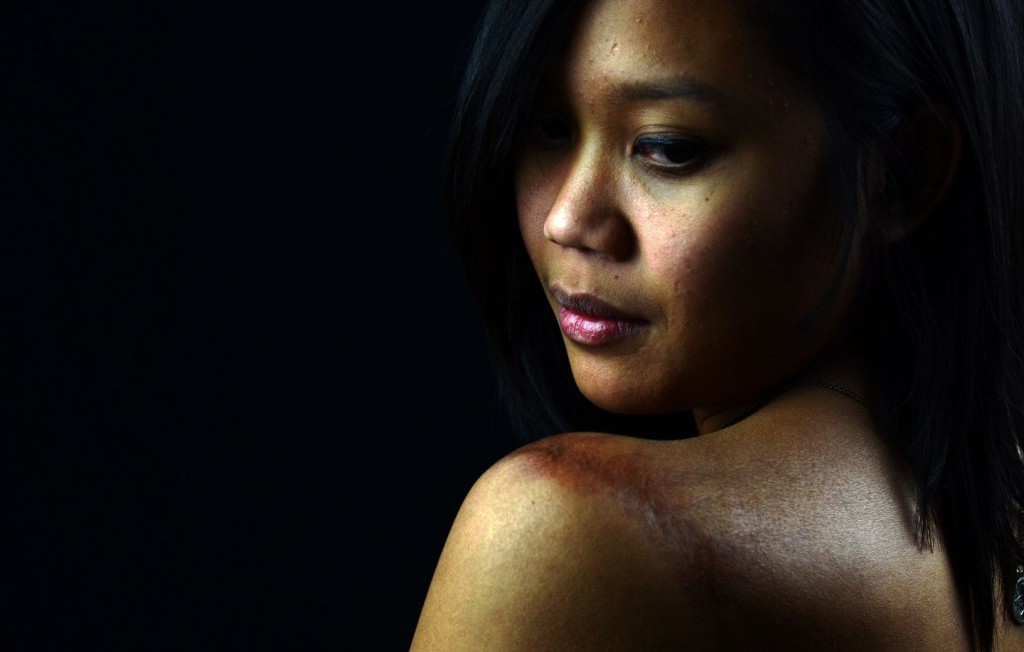Maria Cristina Laureano was burned when she was just a baby, she doesn’t remember it now, she was only nine months old. A pot of boiling water came down and streaked over her tiny shoulders, her parents raced to find help in the rural Filipino city where they were living at the time, and there were blood transfusions and oh God what if she might die.
Her parents don’t talk about it much, now; it’s a hard thing to remember. But 25 years later, Laureano’s scars are still there. “I only know bits and pieces,” Laureano says, taking refuge from the February cold in an Exchange District coffee shop. “That’s part of why I’m doing this project. There are so many gaps in my story. So it was kind of like me trying to make my own story out of it.”
The project she describes is a website; it’s called After The Cocoon. Created as part of Laureano’s second-year coursework for Red River College’s Creative Communications program, the site documents burn survivors’ stories — what happened before, during, after — and offers a glimpse into how their lives went on after the healing was done. Most of all, in a culture that rarely bears the most unvarnished images of survival, After The Cocoon invites us to look — and in looking, understand.
Ten men and women are featured on the site, their stories gently and honestly described and their photos lovingly taken. They range from Nova Scotian Debbie Ward, a leading burn survivor advocate who was badly burned when she was only seven years old, to Winnipeg firefighter Lionel Crowther, who survived the 2007 blaze that claimed the lives of Capt. Harold Lessard and Capt. Thomas Nichols.
Laureano photographed some of the subjects last June, at the national Canadian Burn Survivors Association conference in Calgary. It was the first time she’d really met other burn survivors, and what she found was something like a family. “I was talking to young women who had gone through really similar things, and that was really rewarding,” she says. “It was super emotional and overwhelming. I couldn’t have done this without the burn community. That was the final push that helped me go through it: was them, was the idea that we could do it together.”
In some of Laureano’s photographs, her subjects are shown whole and strong and smiling. In others, the physical aftermath of their survival is captured crisp and bright. Under her lens, their burns spread out like maps of some fantastic valley: whorls of scar tissue flow over necks and shoulders. Where healthy skin was laid in graft, perfect geometric patterns bracelet forearms and ripple around gently folded hands.
One photo series highlights Darryl Parsons, a survivor from Nova Scotia, who has a tattoo straddling his clavicle that once proclaimed him a “hopeless romantic.” After a campfire exploded on his 26th birthday – someone tossed a gas can into the flames – the burns that seared his neck rubbed the tattoo’s edges out like an eraser; Laureano’s lens closes in on this artifact of his accident, too. For all our talk of creating permanence, nature will still shape skin more powerfully than any needle.
The photos are intimate and full of life: you might guess that Laureano’s shared experience that helped put her photographic subjects at ease. It may have been the other way around. “I felt like a lot of them had dealt with their issues way more than I had,” she muses. “The first time I ever met another burn survivor was through (this project). It was so emotional for me to do every interview, because I always heard parts of my story in it. Afterward I’d go to my hotel room and just bawl my eyes out.”
